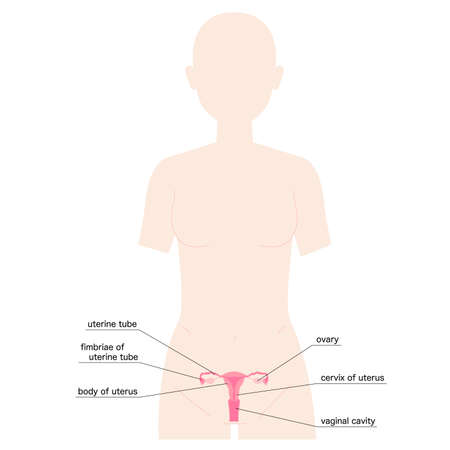1. Introduction to Tendon and Ligament Surgery
Tendons and ligaments play a huge role in how our bodies move every day. Tendons connect muscles to bones, helping us flex and extend our joints, while ligaments connect bones to other bones, providing stability and support. In the United States, injuries to these important structures are very common—especially among athletes, active individuals, and older adults. Sometimes, when these tissues are badly injured or torn, surgery is needed to restore function and help people get back to their daily activities.
Common Tendon and Ligament Surgeries in the U.S.
Many types of tendon and ligament surgeries are performed each year in America. The table below highlights some of the most common procedures:
| Surgery Type | Body Area | Typical Patients |
|---|---|---|
| Rotator Cuff Repair | Shoulder | Athletes, middle-aged & older adults |
| Achilles Tendon Repair | Ankle/Foot | Runners, weekend warriors |
| Anterior Cruciate Ligament (ACL) Reconstruction | Knee | Younger athletes, active adults |
| Medial Collateral Ligament (MCL) Repair | Knee | Athletes in contact sports |
| Flexor/Extensor Tendon Repair | Hand/Wrist/Fingers | Workers with hand injuries, anyone with cuts or trauma to the hand |
Why These Surgeries Matter for Mobility and Function
The main goal of tendon and ligament surgeries is to restore movement, strength, and stability to the affected joint or body part. Without proper repair and healing, people can experience ongoing pain, weakness, or even permanent loss of function. That’s why rehabilitation after surgery is so important—it helps patients regain their ability to walk, lift objects, play sports, or simply go about their daily lives without discomfort.
2. Common Post-Surgical Complications
After tendon or ligament surgery, patients often face a few common complications that can affect their recovery process. Knowing what to expect can help you and your healthcare team respond quickly and keep your rehab on track.
Common Complications After Surgery
| Complication | Description | Impact on Rehabilitation |
|---|---|---|
| Infection | Bacteria entering the surgical site causing redness, swelling, pain, or discharge. | May require antibiotics or even additional surgery; delays healing and rehab exercises. |
| Stiffness | Limited range of motion due to swelling, pain, or scar tissue formation. | Makes it hard to regain full movement; may need more intensive physical therapy. |
| Adhesions (Scar Tissue) | Tissues stick together abnormally, restricting movement around the tendon or ligament. | Lowers flexibility and strength; sometimes requires special treatments or even another surgery. |
| Re-tear or Failure | The repaired tendon or ligament tears again, often from trauma or too much activity early on. | Usually needs further surgery; significantly extends the rehab timeline. |
| Nerve Damage | Nerves near the surgical site get injured, causing numbness, tingling, or weakness. | Makes exercises harder; may cause long-term changes in sensation or muscle control. |
How These Complications Affect Rehabilitation
Each of these complications can change how rehabilitation progresses. For example, if there’s an infection, your doctor might pause some activities until it’s under control. Stiffness and adhesions might mean you need extra stretching or manual therapy. If a re-tear happens, rehab usually has to start over after another surgery. Nerve injuries may require special therapies to help with sensation and movement.
Spotting Problems Early Matters
If you notice increased pain, redness, swelling, fever, unusual numbness, or trouble moving your limb after surgery, let your medical team know right away. Addressing issues early helps prevent bigger setbacks in your recovery process.
Your Rehab Team Is Here to Help
Your physical therapist and surgeon are familiar with these challenges and will work closely with you to adjust your plan if any complications arise. Staying informed and communicating openly is key for a smoother rehabilitation journey.
![]()
3. Impact of Complications on Rehabilitation
How Surgical Complications Affect Recovery
Surgical complications after tendon or ligament procedures can have a big impact on how quickly and safely someone recovers. Issues like infections, stiffness, nerve injuries, re-tears, or swelling may slow down rehabilitation, require changes in treatment plans, and sometimes even lead to more surgeries. These complications can cause extra pain, limit how much someone can move their joint, and affect confidence in using the injured area.
Common Complications and Their Effects
| Complication | Possible Effects on Rehab | Adjustments in Therapy |
|---|---|---|
| Infection | Increased pain, swelling, delayed healing | Pause or reduce intensity of exercises, possible antibiotics needed |
| Joint Stiffness | Limited range of motion, slower progress | Focus on gentle stretching and mobility work, use of heat modalities |
| Nerve Injury | Numbness, weakness, coordination problems | Adapt exercises for safety, add sensory/motor retraining |
| Re-Tear or Rupture | Loss of surgical repair benefits, need for more surgery | Return to protective phase, avoid high-stress activities until cleared by surgeon |
| Excessive Swelling (Edema) | Pain, limited movement, risk for scar tissue formation | Add elevation, compression, manual lymphatic drainage techniques |
Strategies Clinicians Use to Address Complications
Physical therapists and rehab specialists in the U.S. often take a flexible approach when complications happen. Here are some common strategies:
- Open Communication: Therapists keep close contact with both the patient and the surgeon to make sure everyone is updated on new issues.
- Pain Management: If pain increases due to complications, therapists may use ice packs, gentle movements, and other comfort measures before progressing exercises.
- Modified Exercise Plans: Rehab programs are often adjusted to match what the patient can tolerate safely—sometimes focusing more on mobility or protection rather than strength early on.
- Pacing and Patience: Clinicians encourage patients not to rush recovery. They may set smaller goals if setbacks occur.
- Education: Patients are taught warning signs of serious complications (like redness or fever) so they know when to seek medical attention.
- Use of Adaptive Equipment: If needed, braces or assistive devices (like crutches) might be used longer to protect healing tissues.
- Mental Health Support: Dealing with setbacks can be stressful. Many clinics connect patients with counseling services or support groups if needed.
The Bottom Line for Rehab Progression After Complications
If complications occur after tendon or ligament surgery, it’s normal for the rehab timeline to change. The key is working closely with your care team so your recovery plan matches your unique needs. Adjustments are made every step of the way to help you get back on track as safely and comfortably as possible.
4. Rehabilitation Protocol Adjustments
Understanding the Need for Adaptation
After tendon or ligament surgery, every patient’s recovery can look a little different. Common complications such as swelling, stiffness, pain, infection, or delayed healing often require changes to the standard rehabilitation plan. In the United States, physical therapists and rehab specialists are trained to customize protocols to fit each person’s needs and lifestyle.
How Rehab Plans Are Adjusted
If complications arise during recovery, the physical therapy team will often adjust three main aspects of your rehab program: the intensity of exercises, how often you do them, and the types of exercises included. This personalized approach helps prevent further injury and supports steady progress.
Examples of Rehab Adjustments Based on Complications
| Complication | Adjustment to Intensity | Adjustment to Frequency | Adjustment to Exercise Type |
|---|---|---|---|
| Swelling & Pain | Reduce resistance or weight used in exercises | Decrease sessions per week if needed | Add gentle range-of-motion movements; limit weight-bearing activities |
| Stiffness & Limited Mobility | Gradually increase intensity as tolerated | Shorter but more frequent sessions may be recommended | Focus on stretching and mobility drills rather than strengthening at first |
| Delayed Healing or Infection | Avoid high-intensity exercise until cleared by physician | Follow medical advice—may need a temporary pause in therapy | Add passive movement (with help from therapist) and wound care education |
| Nerve Symptoms (numbness/tingling) | No aggressive strengthening until nerves recover | Pace sessions to avoid aggravating symptoms | Emphasize protective movements and nerve gliding techniques |
Communication Is Key in American Rehab Settings
In U.S. rehab clinics, open communication between patients, therapists, and doctors is highly encouraged. If you notice new symptoms or complications after surgery, let your care team know right away so they can make timely adjustments to your plan. This collaborative approach helps keep your recovery on track and ensures that therapy remains safe and effective throughout each stage of healing.
5. Patient Education and Self-Management
The Importance of Patient Education in the U.S. Healthcare System
After tendon or ligament surgery, understanding what to expect during recovery is essential. In the American healthcare system, patient education empowers you to play an active role in your rehabilitation journey. Knowing about common complications—like stiffness, swelling, infection, or re-injury—helps you recognize early warning signs and seek help promptly.
Self-Management Techniques
Most recovery happens outside the clinic. Learning self-management techniques gives you control over your progress and helps prevent complications. Here are some key strategies:
| Technique | Purpose | How to Apply |
|---|---|---|
| Pain Management | Reduces discomfort and swelling | Use ice packs, prescribed medications, and rest as directed by your doctor |
| Wound Care | Prevents infection | Keep surgical site clean and dry; follow dressing change instructions |
| Activity Modification | Avoids re-injury | Follow weight-bearing or movement restrictions given by your surgeon or therapist |
| Elevation & Compression | Minimizes swelling | Elevate limb above heart level; use compression garments if recommended |
Home Exercise Programs (HEP)
Your physical therapist will provide a tailored home exercise program to support healing and restore function. Completing these exercises as prescribed is crucial for regaining strength, flexibility, and mobility. Skipping or overdoing exercises can slow recovery or cause setbacks.
Tips for Sticking with Your Home Program:
- Set reminders on your phone to do your exercises daily
- Keep a log or journal of your progress and symptoms
- If something feels wrong—such as increased pain or swelling—pause and contact your healthcare team before continuing
Communication with Your Healthcare Team
Open communication with your providers is a cornerstone of successful rehab in the U.S. If you notice new symptoms like redness, fever, persistent pain, or loss of function, reach out right away. Don’t be afraid to ask questions about your recovery plan, medication side effects, or activity restrictions. Most clinics offer online portals where you can send messages directly to your provider for convenience.
When Should You Contact Your Healthcare Team?
| Symptom or Issue | Action to Take |
|---|---|
| Fever over 100.4°F (38°C) | Contact your provider immediately |
| Increasing redness or drainage from incision site | Report right away for possible infection check-up |
| Sustained increase in pain not managed by medication/ice/rest | Reach out for assessment and guidance |
| Numbness or tingling that does not improve with position changes | Call your provider promptly to rule out nerve involvement |
| Trouble performing home exercises due to pain/stiffness/fear of injury | Mention at next appointment or message therapist for modifications |
Your Active Role Matters!
Your involvement through education, self-management, consistent home exercise, and strong communication makes a real difference in preventing complications after tendon or ligament surgery—and ensures the best possible outcome from rehabilitation.


